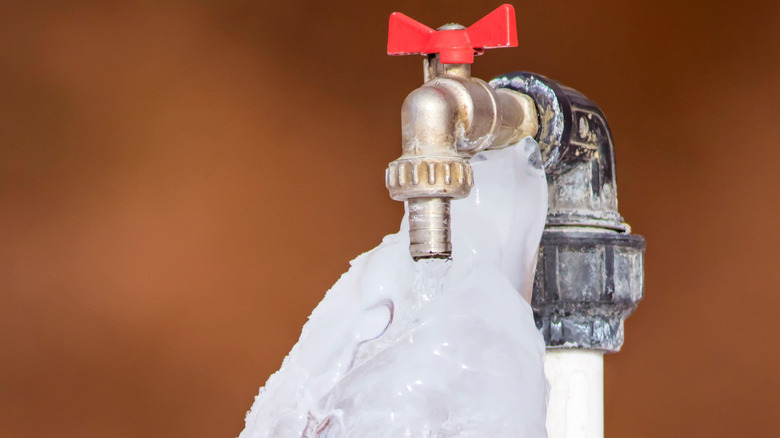Important Tips to Protect Against Frozen Plumbing in Cold Weather
Important Tips to Protect Against Frozen Plumbing in Cold Weather
Blog Article
What are your thoughts and feelings on How To Avoid Freezing Pipes?

Cold weather can damage your plumbing, particularly by freezing pipes. Here's how to prevent it from taking place and what to do if it does.
Intro
As temperature levels drop, the threat of frozen pipelines boosts, possibly causing pricey repairs and water damages. Recognizing exactly how to stop icy pipelines is crucial for home owners in cool climates.
Understanding Icy Pipelines
What triggers pipelines to freeze?
Pipes ice up when revealed to temperatures listed below 32 ° F (0 ° C) for expanded durations. As water inside the pipes ices up, it broadens, putting pressure on the pipeline wall surfaces and potentially creating them to break.
Dangers and problems
Icy pipes can bring about water system disruptions, home damage, and costly repair work. Ruptured pipes can flood homes and create comprehensive architectural damage.
Indicators of Frozen Pipeline
Recognizing frozen pipes early can avoid them from breaking.
How to determine icy pipelines
Look for reduced water flow from faucets, unusual smells or sounds from pipelines, and noticeable frost on exposed pipes.
Prevention Tips
Protecting prone pipelines
Wrap pipes in insulation sleeves or use heat tape to safeguard them from freezing temperatures. Focus on pipes in unheated or outside areas of the home.
Heating techniques
Maintain indoor rooms effectively heated, especially locations with pipes. Open closet doors to permit warm air to flow around pipelines under sinks.
Protecting Outdoor Pipes
Yard hoses and outdoor faucets
Disconnect and drain garden hoses prior to winter. Mount frost-proof spigots or cover outdoor taps with shielded caps.
What to Do If Your Pipelines Freeze
Immediate actions to take
If you believe icy pipes, keep taps open up to alleviate stress as the ice thaws. Use a hairdryer or towels taken in hot water to thaw pipes slowly.
Long-Term Solutions
Architectural adjustments
Take into consideration rerouting pipelines far from outside walls or unheated locations. Add added insulation to attics, basements, and crawl spaces.
Upgrading insulation
Buy premium insulation for pipelines, attics, and walls. Correct insulation aids preserve constant temperatures and decreases the threat of icy pipes.
Conclusion
Avoiding frozen pipelines needs positive steps and fast reactions. By understanding the reasons, indications, and preventive measures, homeowners can shield their plumbing throughout cold weather.
5 Ways to Prevent Frozen Pipes
Drain Outdoor Faucets and Disconnect Hoses
First, close the shut-off valve that controls the flow of water in the pipe to your outdoor faucet. Then, head outside to disconnect and drain your hose and open the outdoor faucet to allow the water to completely drain out of the line. Turn off the faucet when done. Finally, head back to the shut-off valve and drain the remaining water inside the pipe into a bucket or container. Additionally, if you have a home irrigation system, you should consider hiring an expert to clear the system of water each year.
Insulate Pipes
One of the best and most cost-effective methods for preventing frozen water pipes is to wrap your pipes with insulation. This is especially important for areas in your home that aren’t exposed to heat, such as an attic. We suggest using foam sleeves, which can typically be found at your local hardware store.
Keep Heat Running at 65
Your pipes are located inside your walls, and the temperature there is much colder than the rest of the house. To prevent your pipes from freezing, The Insurance Information Institute suggests that you keep your home heated to at least 65 degrees, even when traveling. You may want to invest in smart devices that can keep an eye on the temperature in your home while you’re away.
Leave Water Dripping
Moving water — even a small trickle — can prevent ice from forming inside your pipes. When freezing temps are imminent, start a drip of water from all faucets that serve exposed pipes. Leaving a few faucets running will also help relieve pressure inside the pipes and help prevent a rupture if the water inside freezes.
Open Cupboard Doors
Warm your kitchen and bathroom pipes by opening cupboards and vanities. You should also leave your interior doors ajar to help warm air circulate evenly throughout your home.

I'm just very inquisitive about Helpful Tips to Prevent Frozen Pipes this Winter and I'm hoping you enjoyed the new blog posting. If you appreciated our blog post kindly do not forget to pass it around. I take joy in reading our article about 6 Ways to Prevent Frozen Pipes.
Source This Article Report this page